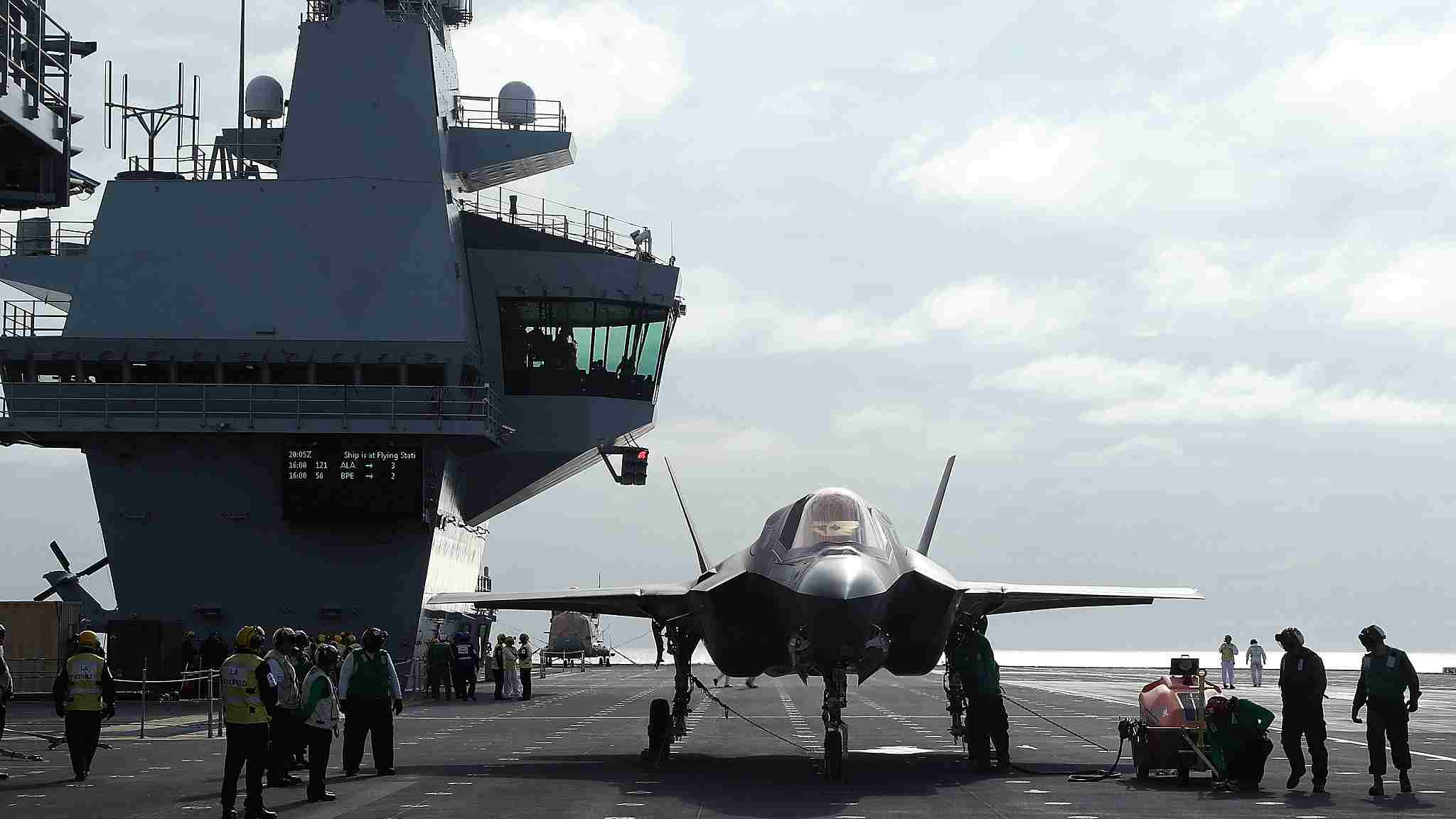Editor's note: Kang Jie is an assistant research fellow at the China Institute of International Studies. The article reflects the author's opinion, and not necessarily the views of CGTN.
U.S. Secretary of State Mike Pompeo gave Russia an ultimatum: Russia must return into compliance on the Intermediate-Range Nuclear Forces Treaty (INF), which banned both sides from developing and deploying any ground-based ballistic and cruise missiles with a range of 500 to 5,000 kilometers, or the U.S. will pull out of it.
It is puzzling that President Trump tweeted that the U.S. was talking to Russia to halt an "uncontrollable arms race" just 48 hours ago. It is even more puzzling that, on October 26, the White House Office of Management and Budget ordered the Department of Defense to set a 700-billion-U.S.-dollar cap on the FY2020 defense budget, cutting 33 billion U.S. dollars from the planned 733 billion U.S. dollars, just two days after Trump issued the first threat of INF withdrawal. All these contradictory statements just indicate how volatile, inconsistent and contradictory the policies are under the Trump administration.
Mr. Trump used to be one of the most enthusiastic advocators of the arms race. Since coming to power, he has repeatedly complained about previous U.S. administrations and the EU allies for their failure to maintain a large enough defense budget. Meanwhile, he uses the expansion of the FY2019 defense budget as one of his main achievements.

U.S. President Donald Trump signs the National Defense Authorization Act for fiscal year 2018, in the Roosevelt Room at the White House in Washington, DC, December 12, 2017. /VCG Photo
U.S. President Donald Trump signs the National Defense Authorization Act for fiscal year 2018, in the Roosevelt Room at the White House in Washington, DC, December 12, 2017. /VCG Photo
It seems that Mr. Trump and his trusting adviser John Bolton regard the withdrawal of the INF treaty as an economical solution to keep the Indo-Pacific military sequestered. According to the Congressional Budget Office, the projected deficit for FY2019 is over 1 trillion U.S. dollars, and will continue to grow. The budget cutting seems like the only reasonable choice to avoid risk.
At the same time, compared with more expensive strike platforms such as the Arleigh Burke-class destroyer, Virginia-class submarine and B-2 stealth bomber, the ground-based intermediate-range missile banned by the INF treaty will be an affordable and less ineffective supplement for the U.S. military. In a word, the budget pressures give birth to the U.S.'s new ambition on new missile weapons.

The nuclear-powered aircraft carrier USS Dwight D. Eisenhower steams alongside the nuclear-powered aircraft carrier USS Enterprise after arriving in the Red Sea, October 31, 2006. /VCG Photo
The nuclear-powered aircraft carrier USS Dwight D. Eisenhower steams alongside the nuclear-powered aircraft carrier USS Enterprise after arriving in the Red Sea, October 31, 2006. /VCG Photo
Nevertheless, Mr. Trump and Mr. Bolton's dreams about a new “game-changer” may not succeed. The Democratic Party, which recaptured the House in the midterm election, will tighten the control on the defense budget. Democrat Adam Smith, who will serve as the chairman of the Armed Services Committee of the House, has joined other members to openly oppose Trump's INF stances, saying the withdrawal of the treaty and the re-deployment of the ground-based intermediate-range missiles will fail the trust of European allies.
Considering the Democratic Party's positive position in the arms control issues and its emphasis on alliance reassurance, it will be more difficult for the Pentagon to obtain more cash for research, development, procurement and deployment of new ground-based intermediate-range missiles.
Withdrawal from the INF treaty and the redeployment of ground-based intermediate-range missiles will fuel the inter-service rivalries in the U.S. military. The largest beneficiary of the redeployment is the Army. One of the potential "post-INF weapons" with the fastest R&D progress is the U.S. Army's Precision Strike Missile (PrSM) program.

General Joseph Dunford, Jr. (L), USMC chairman of the Joint Chiefs of Staff, Secretary of Defense James Mattis (C), and Under Secretary of Defense David Norquist (R) take their seats for the Senate Armed Services Committee hearing on the Defense Authorization Request for Fiscal Year 2019, April 26, 2018. /VCG Photo
General Joseph Dunford, Jr. (L), USMC chairman of the Joint Chiefs of Staff, Secretary of Defense James Mattis (C), and Under Secretary of Defense David Norquist (R) take their seats for the Senate Armed Services Committee hearing on the Defense Authorization Request for Fiscal Year 2019, April 26, 2018. /VCG Photo
PrSM's 499km range is just to comply with the INF treaty's 500km threshold, which means there will not be any technical difficulties to increase the range to more than 500km when conducting its first flight in 2019 and putting it into service after 2023.
However, post-INF weapons development will absorb more of the defense budget, while the re-deployment of ground-based intermediate-range missiles will greatly enhance the operational priority of the Army. All of these will inevitably change the existing defense budget allocation structure and the balance of interests among different services.
As a result, any new post-INF program will be strongly opposed by other services and their representatives on Capitol Hill. Since the Air Force and the Navy hold far more influence in Congress than the Army, there have been many members of the legislature that have proposed to cut down the Army's PrSM.
(If you want to contribute and have specific expertise, please contact us at opinions@cgtn.com.)





